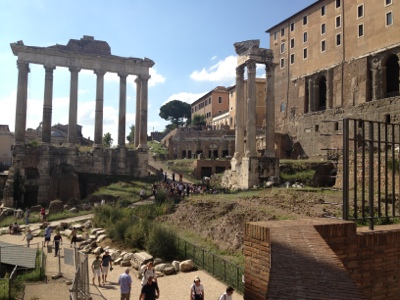Everyone smoking nearly everywhere all the time (not)
Antiquities around every corner (miss)
The cosmopolitan nature of a truly international city (miss)
Strong and unpleasant smells from body odor and cloying perfumes to sewer gas, garbage and burning chestnuts (not)
Great, high-frequency public transit (miss)
Tender and flaky pastry at even run of the mill pasticcerias (miss)
No agenda but our whimsy (miss)
Little narrow beds (not)
Standing in front of the masterworks of Rennaissance art (miss)
Walking and sitting in the piazzas (miss)
Italian assertiveness/pushiness (miss/not)
Marvelous olive oils on nearly every table (miss)
Window shopping the stylish, over the top shops (miss)
The feel of being in the Motherland (miss)
Streets as negotiated space for peds and cars alike (miss)
Cars everywhere and often suddenly behind you (not)
Cooking with the lovely Marcella in her sweetly mod orange kitchen (miss)
Cash machines dispensing large bills in a city where everyone wants exact change only (not)
The elegant, majestic Italian pines (miss)
Sleeping with ears plugged (not)
And last, but not least, doing all of the above in the company of my amazing mom, a supremely generous traveling companion who still thinks after many years of contraindication that her daughter is terribly clever and rather funny!
Ciao, Italia!




























































